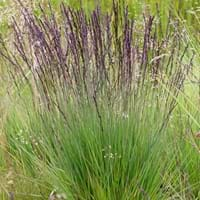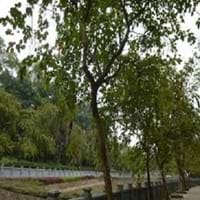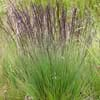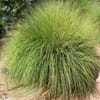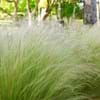Life Span
Perennial
Biennial
Origin
Asia, Europe, North Africa
South-Eastern Asia, Southeastern Asia, China
Types
purple moor-grass 'Moorhexe', variegated purple moor-grass
Purple Orchid Tree, White Orchid Tree, Bidi leaf tree
Habitat
Boggy areas, Dry and Young forest Heaths, Lowland
Forests, Mountain Slopes, Valley
USDA Hardiness Zone
4-8
9-13
Sunset Zone
1a, 1b, 2a, 2b, 3a, 3b, 4, 5, 6, 7, 8, 9, 14, 15, 16, 17
H1, H2, 9, 10, 11, 13, 18, 19, 20, 21, 22, 23
Habit
Clump-Forming
Upright/Erect
Flower Color
Dark Purple
Light Pink, Magenta, Violet
Flower Color Modifier
Bicolor
Bicolor
Fruit Color
Non Fruiting Plant
Green, Sandy Brown
Leaf Color in Spring
Green, Dark Green
Green, Gray Green
Leaf Color in Summer
Light Green
Green, Gray Green
Leaf Color in Fall
Green, Yellow green, Gold
Green, Gray Green, Yellow green
Leaf Color in Winter
Tan
Green, Gray Green, Yellow green
Leaf Shape
Needle like
Butterfly shaped
Plant Season
Spring, Summer, Fall, Winter
Spring, Summer
Sunlight
Full Sun, Partial Sun
Full Sun, Partial Sun
Type of Soil
Clay, Loam, Sand
Clay, Loam, Sand
The pH of Soil
Acidic, Neutral
Acidic, Neutral
Soil Drainage
Average
Well drained
Bloom Time
Late Spring, Summer, Late Summer, Early Fall, Fall
Early Spring, Spring
Tolerances
Not Available
Drought
Where to Plant?
Ground, Pot
Ground
How to Plant?
Divison, Transplanting, Vegetative Reproduction
Budding, Grafting, Seedlings
Plant Maintenance
Low
Medium
Watering Requirements
Requires regular watering, Water more frequently during periods of extreme drought
Average Water Needs, Keep the ground moist but not water-logged, Water Deeply
In Summer
Lots of watering
Lots of watering
In Spring
Moderate
Moderate
In Winter
Average Water
Average Water
Soil pH
Acidic, Neutral
Acidic, Neutral
Soil Type
Clay, Loam, Sand
Clay, Loam, Sand
Soil Drainage Capacity
Average
Well drained
Sun Exposure
Full Sun, Partial Sun
Full Sun, Partial Sun
Pruning
Prune in winter, Remove damaged leaves, Remove dead branches, Remove dead leaves
Remove branches, Remove damaged leaves, Remove dead branches, Remove dead leaves, Remove dead or diseased plant parts
Fertilizers
No need to fertilize every year
Apply N-P-K
Pests and Diseases
Pests and diseases free
Red blotch
Plant Tolerance
Not Available
Drought
Flower Petal Number
Single
Single
Foliage Texture
Fine
Medium
Foliage Sheen
Matte
Matte
Invasive
Sometimes
Sometimes
Attracts
Not Available
Birds
Allergy
Not Available
Not Available
Aesthetic Uses
Showy Purposes, Water gardening
Not Used For Aesthetic Purpose
Beauty Benefits
Not Available
Not Available
Environmental Uses
No fertilizer, pesticides, or herbicides needed
Air purification, Nesting sites for birds, Shadow Tree
Medicinal Uses
No Medicinal Use
Carminative, Laxative
Part of Plant Used
Whole plant
Buds, Flowers, Leaves, Root, Seeds, Stem
Other Uses
Used as Ornamental plant
Fibre, Gum, Used as a dye
Used As Indoor Plant
No
No
Used As Outdoor Plant
Yes
Yes
Garden Design
Container, Foundation, Mixed Border
Feature Plant, Shade Trees, Street Trees, Tropical
Botanical Name
Molinia caerulea
BAUHINIA purpurea
Common Name
purple moor-grass
Butterfly Tree, Orchid Tree
In Hindi
बैंगनी दलदल घास
Butterfly tree
In German
Pfeifengras
Schmetterlings- Baum
In French
pourpre lande-grass
arbre de papillon
In Spanish
púrpura amarra-hierba
árbol de la mariposa
In Greek
μωβ Moor-γρασίδι
δέντρο πεταλούδα
In Portuguese
purple moor-grass
árvore borboleta
In Polish
fioletowy Moor-trawa
drzewo Butterfly
In Latin
Maurus herba-purpura,
Gloria ligno
Phylum
Magnoliophyta
Magnoliophyta
Class
Liliopsida
Magnoliopsida
Clade
Angiosperms, Commelinids, Monocots
Angiosperms, Eudicots, Rosids
Tribe
Not Available
Cercideae
Subfamily
Not Available
Caesalpinioideae
Number of Species
Not Available
Season and Care of Molinia Caerulea and Butterfly Tree
Season and care of Molinia Caerulea and Butterfly Tree is important to know. While considering everything about Molinia Caerulea and Butterfly Tree Care, growing season is an essential factor. Molinia Caerulea season is Spring, Summer, Fall and Winter and Butterfly Tree season is Spring, Summer, Fall and Winter. The type of soil for Molinia Caerulea is Clay, Loam, Sand and for Butterfly Tree is Clay, Loam, Sand while the PH of soil for Molinia Caerulea is Acidic, Neutral and for Butterfly Tree is Acidic, Neutral.
Molinia Caerulea and Butterfly Tree Physical Information
Molinia Caerulea and Butterfly Tree physical information is very important for comparison. Molinia Caerulea height is 120.00 cm and width 30.00 cm whereas Butterfly Tree height is 760.00 cm and width 17.80 cm. The color specification of Molinia Caerulea and Butterfly Tree are as follows:
Molinia Caerulea flower color: Dark Purple
Molinia Caerulea leaf color: Green and Dark Green
Butterfly Tree flower color: Light Pink, Magenta and Violet
- Butterfly Tree leaf color: Green and Gray Green
Care of Molinia Caerulea and Butterfly Tree
Care of Molinia Caerulea and Butterfly Tree include pruning, fertilizers, watering etc. Molinia Caerulea pruning is done Prune in winter, Remove damaged leaves, Remove dead branches and Remove dead leaves and Butterfly Tree pruning is done Remove branches, Remove damaged leaves, Remove dead branches, Remove dead leaves and Remove dead or diseased plant parts. In summer Molinia Caerulea needs Lots of watering and in winter, it needs Average Water. Whereas, in summer Butterfly Tree needs Lots of watering and in winter, it needs Average Water.
